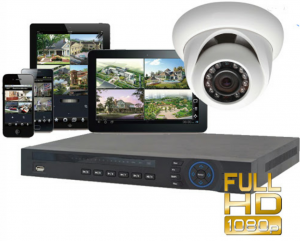
CAMERAS
Image

Details
CAMERA SYSTEMS:
We offer a great selection of the top professional-grade camera systems for home or business surveillance. All of our systems are designed for superior quality, reliability and simple plug and play setup. Each product is color coded for easy product selection and full feature compatibility.
When choosing a new system many customers will consider IP security cameras for their broad selection and simple installation. We also recommend HD over Coax systems for customers upgrading older analog systems or long distance cabling requirements.
Camera Features & Technology
IP security cameras come with a wide range of features and technologies, allowing you to record video in HD, adjust to changing light levels throughout the day, and even focus your camera remotely. These features make your camera more powerful and useful, since you can adjust them as needed to fit your surveillance needs.
Physical features of your camera will impact how the video is recorded. A camera iris and image sensor work together to adjust to changing light levels to produce clear video. Other features are found in your camera’s software, like Wide Dynamic Range, which balances the light in a video after it’s recorded, or video compression to allow you to store more files.
Advanced Camera Features
You have many choices to make about your camera’s features, from which type of iris and image sensor you want to what level of HD resolution your system needs. Below you’ll find in-depth explanations of these camera features along with suggestions of the best application for each technology.
HD Analog Technology
An affordable alternative to IP cameras, HD analog cameras combine powerful high definition resolution with analog CCTV technology. This allows you to record video for license plate capture or facial recognition without upgrading your system to use IP technology.
HD Resolution
If your camera will be used to identify people, read license plates, or capture video to be used as evidence of a crime, you’ll want a camera with HD resolution. HD cameras capture video in a larger, clearer format than traditional cameras so you can easily identify what is happening.
Wide Dynamic Range (WDR)
Recording in an area with uneven light, so one area is overly bright while another corner of the room is always in the shadows? Using wide dynamic range (WDR), your surveillance camera can balance out the light in the entire video to make actions clearer and easier to see.
Frame Rates
Frames per second, of FPS, is a standard measurement for how many frames your camera records per second. Higher frame rate makes videos progress smoother, important when recording fast-moving objects.
Edge/Local Recording
Whether you use edge/local recording as a backup to a NVR for times when the camera cannot connect, or as the main storage method when recording smaller or fewer videos, edge/local recording allows you to save video files directly on the surveillance camera with a memory card.
Tamper Detection
Using tamper detection settings within your security camera, you can get email or SMS alerts whenever your camera is physically attacked or vandalized, someone attempts to cut the power to the camera, or the camera view is obscured so you know instantly when something happens.
Remote Focus Lens
When you need to adjust the focus of a surveillance camera after it was installed, remote focus makes it easy. This option in many cameras allows you to use software to adjust the focus, so you aren’t required to physically access a camera in a difficult-to-reach position.
Image Sensors
Using the light passed in by the camera iris, the image sensor records the levels of light on each pixel to create your surveillance videos. The new CMOS image sensors allow cameras to clearly record in HD resolution and create videos with fast-moving objects that won’t turn out blurry.
Video Compression
Essential for relaying video within an IP system and for storing video files, video compression codec’s remove or reduce unnecessary files and frames per second without sacrificing your videos image quality. A variety of video compression methods are available for IP cameras.
Vertical/Corridor Format
Using a traditional, horizontally-oriented camera in narrow spaces wastes the camera’s resolution and creates large than necessary files. Using vertically-oriented formatting, cameras can maximize resolution and reduce waste when recording in hallways, stairways, and more.



